#welcome to Sarajevo
Audio
WIRE (FULL LENGTH VOCAL)
MASSIVE ATTACK ft. SARAH JAY | 1997
#audio#massive attack#sarah jay#trip hop#downtempo#unreleased#rare#welcome to sarajevo#90s#electronic#music#u
27 notes
·
View notes
Text
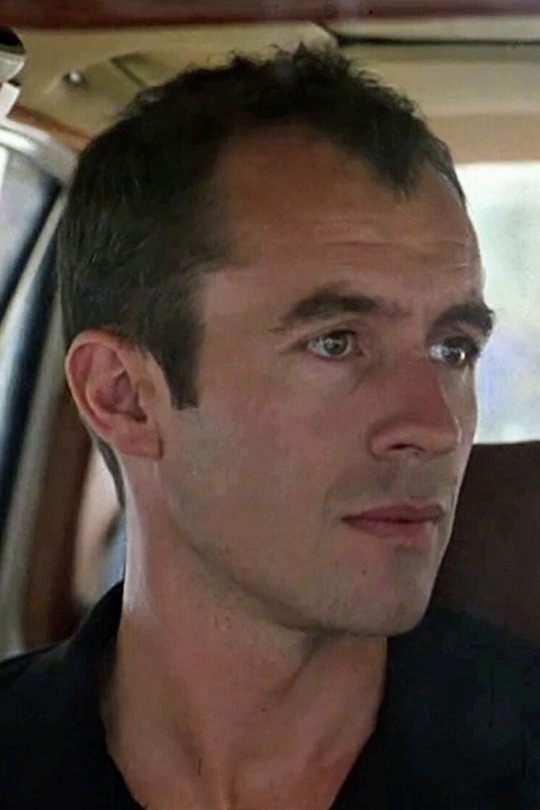
Guess what day it is! 🥵
#stephen dillane#thirsty thursday#michael henderson#welcome to sarajevo#40 years old SD is the most handsome SD
12 notes
·
View notes
Text
A very happy birthday to Woody Harrelson!




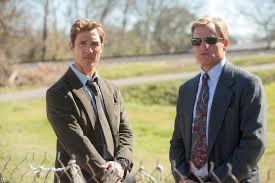

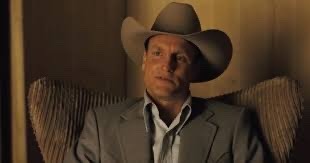


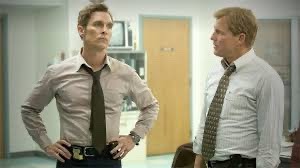
#woody harrelson#natural born killers#cheers#true detective#palmetto#welcome to Sarajevo#money train#white men can’t jump#the people vs larry flynt#venom: let there be carnage#no country for old men#surfer dude#rampart#the messenger#edtv#play it to the bone#the hunger games#movies#television
13 notes
·
View notes
Text

🤎🤲☀️
1 note
·
View note
Text
eep i have a test on all of ww1 and ww2 (and the interwar period! yay!) tmrw and i'm not very ready!! anyways i'm going to summarize most of what i know ABOUT WW1 under the cut. mostly for my studying but if you want to see you're welcome to read it. BEWARE IT IS LONG
BACKGROUND
scene opens on Germany, a young nation eager to prove itself as strong to the other European powers, namely Britain, who has lots and lots of colonies at this point. (the sun never sets on the British empire!). Britain also has the strongest navy. Germany believes in "Weltpolitik", meaning aggressive expansion.
Germany has recently beaten France in the Franco-Prussian War and acquired the territory Alsace-Lorraine. France is angry and embarrassed. It went from being the biggest European power under the rule of Napoleon to this!! France hates Germany.
Russia is poor but MASSIVE and has a HUGE POLULATION. if it is awaken, it will do serious damage. luckily it is "sleeping" for now.
The Austria-Hungarian empire is made up of many different nations along the Balkan Peninsula who hate being part of the empire. The Balkan Peninsula is known as the powder keg of Europe because a single spark could make it blow up.
There was also the Moroccan Crisis where Britain decided to support France (against Germany) in Egypt and the Suez canal. There is more here, but basically it solidified the hard feelings between Germany and France/Britain.
Everyone starts beefing up their military because conflict is coming!
ALLIANCES FORM
Germany, Austria-Hungary, and Italy ally themselves to form the Triple Alliance. Germany organized this to try to isolate France.
Britain, France, and Russia ally to form the Triple Entente because they were a bit worried about Germany (especially France).
THE SPARK
Archduke Francis Ferdinand, heir to the throne of Austria-Hungary, goes to visit Sarajevo with his wife. He thinks the people will love him! He doesn't know that he is visiting during a parade for Slavic independence. They don't like him. Gavrilo Princip, a member of a nationalist group called Black Hand, kills Francis and his wife.
Austria-Hungary is ANGRY. It blames the government (who didn't organize the assassination, but who weren't sad about it either) and makes unreasonable demands to Serbia, who refuses.
Austria-Hungary declared war on Serbia.
Russia mobilized troops to protect Serbia.
Germany declared war on Russia for mobilizing its troops. Germany was aligned with A-H, so it was at war with Serbia too. Germany also declared war on France because it was allied with Russia (and Germany just didn't like France).
Germany marched through Belgium to get to France quickly so it could defeat France before Russia "woke up". This was called the Schlieffen plan.
Britain declared war on Germany because it had secretly agreed to help Belgium remain sovereign. Now that Britain is at war, so are its many colonies. The war has breached European confinement.
WAR WAS LONG. NO SIDE MOVED OR GAINED MUCH TERRITORY. MANY DIED.
CANADA'S INVOLVEMENT
Men had the idea that war would be quick and glorious so lots signed up!
Germans and Ukrainians were forced to register with authorities and many were sent to internment camps.
Black and Indigenous men faced obstacles trying to enlist because of racism.
French Canadians enlisted less because they had, for the most part, been in Canada longer than British Canadians, so they didn't feel as emotionally attached to France. They also didn't appreciate being encouraged to go fight for Britain because they weren't British.
Women's suffrage and prohibition became two large issues across the country.
Conscription - Borden had promised not to have conscription, but then he took it back. People were angry. He gave women with husbands overseas the right to vote because they would want to send help to the war to bring their husbands back. Yay?
THE BATTLE OF YPRES: Germany introduced poison gas and created a gaping hole in the defences. Canada remained strong and closed the gap. It was the first European battle Canada fought in and it established itself as a powerful country. yippee.
THE BATTLE OF THE SOMME: one of the bloodiest battles in history for all sides. 68 of almost 800 Newfoundland soldiers survived the first few days.
BATTLE OF PASSCHENDAELE: seen as a symbol of ww1's senseless slaughter as thousands died on the field (either killed, drowned in the mud because it was super rainy, or got trenchfoot (don't google it. yucky.))
VIMY RIDGE: this becomes a source of national pride to this day. Canada was able to take a ridge held by Germany that nobody else had succeeded in taking. Ultimately it gave Canada its own seat in post-war discussions and made it recognized as a country. HOW DID WE DO IT? They build a system of caves and tunnels and a railway to transport explosives. During the attack, a creeping barrage of soldiers made its way up the hill, in between heavy artillery fire (in front of and behind them) that was also making its way up the hill. This way, when they stopped firing, the Canadians were on top of the German soldiers. This is called the Vimy Glide. ARTHUR CURRIE was the general who came up with it.
TURNING POINTS:
Not really a turning point but i don't have another section: GALLIPOLI: Australia was a British colony so it had to fight for Britain. Britain threw Australians at the Ottomans as a feint. It was a slaughter.
ITALY CHANGED SIDES due to a secret treaty granting it territories that Italian people lived in. (After the war, they weren't given this territory, leading to the rise of Mussolini).
THE US ENTERED THE WAR: Americans had wanted to stay neutral, but they hated Germany thanks to British propaganda. A German U-boat sunk the Lusitania, which contained American civilians. THE ZIMMERMAN TELEGRAM was from Germany to Mexico saying to attack the southern states to the US was busy fighting and couldn't join the war. The US intercepted this, got angrier at Germany, and joined the war. This helped wear down the Triple Alliance (now down to 2 because of Italy).
PEACE TREATY WAS SIGNED ON NOVEMBER 11 1918
there was then a revolt against the German government because German people had believed they were winning.
#im gonna do ww2 on a reblog#if you find this helpful that's nice#social studies#studying#tagging so i can find this for my final lol#school
8 notes
·
View notes
Text
Elizabeth Gowing’s and Robert Wilton’s book, ‘No Man’s Lands: Eight Extraordinary Women in Balkan History’ tells an absorbing story of women who fought for gender equality in the past - a struggle that’s far from won today.
It was random yet good timing that I received a review copy of No Man’s Lands: Eight Extraordinary Women in Balkan History, by Elizabeth Gowing and Robert Wilton, at the same time as I was finishing up an evaluation report related to efforts to promote women’s equality and political participation in the Western Balkans.
As I heard about contemporary female social and political activists talking about the increasingly hostile environment for female politicians in an age of social media trolling; about the retraditionalization and repatriarchalization trends accompanying the rise of far-right, illiberal socio-political trends; and the continued struggle to prevent gender-based violence, it was a welcome break to read about women who have been seeking to throw off the structures of social tradition and control.
However, reading about these women – viewed as “radicals” for their pursuit of human dignity and agency already back in the 19th century – was also a reminder that the social, political, cultural and economic changes required to underpin women’s equality are stunningly resistant to change, and susceptible to rollback.
This slender and readable volume would be of interest to specialists and non-specialists alike. Gowing’s expertise in travel writing and description is clear, and a book like this would fit well in a backpack of someone travelling through the region looking for interesting place and character descriptions and wanting to learn something about history and culture along the way. I initially found the selection of eight women to be quite random; however, once I accepted this, I realized the overarching connective tissue was not to be found in the country, background or expertise, but in the shared personality characteristics that pushed these women to go against the grain. The description of each woman profiled is inspirational.
Staka Skenderova is highlighted for her work in promoting girls’ education in Sarajevo in the mid-1800s; she opened the first school for girls well before others were later opened during Austro-Hungarian occupation. Her direct work with young people was complemented by her cultural contributions, such as the publication of Annals of Bosnia 1825-1856. Her dress, in men’s clothing, or as a nun, was an outward sign of her rejection of socially dictated femininity; “she smoked tobacco, went out to cafes and never married”, and her Sarajevan cosmopolitanism took her to Belgrade, Constantinople, and Jerusalem. The author, visiting her gravesite in Sarajevo, reflects on the relevance of her struggle in today’s stunted Bosnia: “Obliged to be ethnic first and educated second, Bosnia’s young women are discriminated against regardless of ethnicity.”
Marija Juric Zagorka broke ground as a journalist in Zagreb, editing and writing for Obzor, Zenski List and other periodicals, as well as writing novels and plays. She was imprisoned at one point for organizing demonstrations against Croatia’s Hungarian governor. Writing in favor of both Croatian identity and also women’s identity and independence, she suffered under the various political systems throughout her life. One compelling tidbit explains her practice of taking long walks in Zagreb but then later dictating her prose while blindfolded, conjuring the images she had had in her mind so they could be turned into text. She died close to poverty, though a memorial center in her old apartment remains as a testament to her life and work, as does the popular resonance and accessibility of her novels.
The chapter on Xenia (Ksenija) Petrovic-Njegos is intriguing, particularly for anyone who has a soft space in their heart for Montenegro’s former capital, Cetinje. The author tells her story while describing a visit to her former palace, explaining that being the first woman in the country to drive made it easier for her to pursue her passion for photography. Her photographs say as much about the photographer as the people being photographed, providing a view of her family members as well as fishermen and other “common” people. Illustrative of the author’s description of the hunt for factoids about the characters being studied, a woman working in a gift shop notes how Xenia was quite clever, evident “from the fact that she never got married”.
Maga Magazinovic, born in Uzice but living in Belgrade since a teen, is most famous for her contribution to dance (including a stint in Germany where she studied with none other than Isadora Duncan). However, she was also the first woman to graduate from the Faculty of Philosophy in Belgrade, wrote for Politike (the oldest daily still in circulation), and taught dance and the history of dance. The author’s description of attending a dance festival referencing Maga’s work and influence is evocative.
Margaret Hasluck is the only foreigner included in the collection. Her contribution was primarily through her book, The Unwritten Law in Albania, studying Albania’s kanun, published after her death. In this case, her status as an outsider was necessary as an Albanian woman in Albania at that time would not have been able to do so. Her expertise led to her recruitment by the British government to prepare special operations agents being sent into Albania during World War II. A trail of conversations leads the author to Elbasan to track down her house and any commemorative markings; the author concludes that the fact that her house is known to people yet unmarked in some ways reflects on the still important role of the oral tradition in that country.
The selection of Shote Galica as an example of a prominent woman from Kosovo is noted as fraught from the start. Galica and her husband had been village fighters during the decade spanning the Balkan Wars and World War I, and while documentary evidence of their lives is scant, a photo of them together holding pistols and rifles is one reference point for this nontraditional couple. The role of the Drenica valley in resistance back then and later in the 1990s is explained, providing useful historical context. This profile provides an opportunity to briefly explain various unique practices, such as the concept of the “sworn virgin”. While the author knows that some people regret that the most famous woman in Kosovo was essentially a “bandit,” others provide a more nuanced and charitable description. “Her name continues to represent the bravery and endurance of the Kosovan woman,” says one interlocutor.
Musine Kokalari, Albania’s most distinguished female writer, led a life in the 20th century that mirrored the arc of that country, for good and bad. She studied in Rome, and during World War II wrote three volumes of folktales. The fall of Albania’s monarchy and the Italian occupation would soon be eclipsed by Enver Hoxha’s paranoid and isolated Stalinist regime. She was among a group who in late 1945 drafted an appeal to the allies to postpone elections to enable time for some credible alternative to the communists. This was in vain; and she was arrested in early 1946, ultimately serving 16 years in prison. While she later wrote a secret account of her experiences and reflections, upon release from prison she lived in isolation.
The collection ends with Esma Redzepova – arguably the most popularly known and successful of the women profiled. Born in Skopje in 1943, she and her husband went on to enjoy a spectacular career performing traditional folk music that was accessible to and loved by people from throughout Yugoslavia, while at the same time elevating the music culture and tradition of the Roma minority from which she emerged.
The description of her performances of traditional songs will certainly lead the reader to YouTube to listen to them once again, or for the first time. In contrast to many of the other women whose lives were poor and marginalized (Skenderova at the end lived in poverty, and died after being hit by a horse and carriage in Ilidza; Kokalari was a street sweeper), Redzepova served on the Skopje City Council, represented Macedonia in Eurovision at age 69, and was a UN ambassador for refugees.
Certain themes come through across these multiple mini-biographies. There was an inevitable element of intersectionality lived by all of these women, as they dealt not only with the challenges of being a woman seeking more participation in the public and cultural space but also experienced various political challenges and regimes that spanned empires, fallen empires, wars, and various ascendant ideologies. While nationalisms – by their nature an expression of conservative and right-leaning ideology – sought freedom and independence for their nations, they often failed to seek to secure expanded rights for the women among that nation.
The role of marriage is interesting, for what is said or implied about the impact of marriage on women’s opportunities and options. Skenderova and Xenia never married; Zagorka’s marriage to a Hungarian official was a disaster she managed to escape; and Magazinovic’s marriage ended in divorce. Hasluck’s husband died when she was 35, after which she began her own adventures as a young widow. Galica’s husband had an additional wife, and perhaps even a third. Only Redzepova’s marriage – her husband was a composer and also her manager – seems to have been fulfilling.
And, perhaps of most interest to the traveler – whether armchair or traincar – the extent to which these women have been ignored, marginalized or nearly forgotten is conveyed. Gowing seeks out books, article references and public reminders, such as street names (Magazinovic), a statue to Zagorka in Zagreb, Hasluck’s house which had been turned into a kindergarten, a school named after Kokalari, and graves (Skenderova’s in Sarajevo). The search for these spaces provides color to the stories being told, as do references to elements of this journey – on the Bar-Belgrade train, or seeking information in Cetinje, or navigating the massive construction projects disrupting traffic and pedestrian flows in Tirana.
Specialists and social scientists could quibble with some of the characterizations, but overall it’s a reflective and sensitive book. You can often hear the voice of the narrator (for me it was always Elizabeth), which makes it substantially different than academic texts that are often dry and plodding.
Coming back to the present day and the challenges that women in the region (and globally) continue to face in fighting for equality and dignity, one can’t help but be reminded of the second-wave feminism saying: “The personal is political.” This was true for the women in this volume, and remains true today, in a time when growing insecurities creates opportunities for regressive political agendas. It is easy to be discouraged, but also easy to see that harnessing the power of 51 per cent (or more?) of the global population for a more just society could be the ultimate collective action problem. A reference to a Virginia Woolf quote is inspiring in this regard: “As a woman, I have no country. As a woman I want no country. As a woman my country is the whole world.”
12 notes
·
View notes
Text
Visiting and Exploring Sarajevo
Activity Title: Visiting and Exploring Sarajevo
Type of Activity: Creativity, Activity
Duration: 5 Days
Activity description: During the fall break, I stayed in Sarajevo. During the stay I explored Sarajevo in detail, went Hiking on Trebevic and just enyojed culture
Learning Outcomes:
1.Identity your own strengths and develop areas for personal growth
2. Demonstrate that challenges have been undertaken, developing new skills in the process
3. Demonstrate how to initiate and plan a CAS experience
4. Show commitment to and perseverance in CAS experiences
Reflection:
Exploring Sarajevo is always a good time, even though it's not my first visit. The city has this unique vibe that I enjoy. One of the highlights for me is definitely the local food, especially the cevapi. It's a simple pleasure but so delicious – grilled minced meat with flatbread and onions.
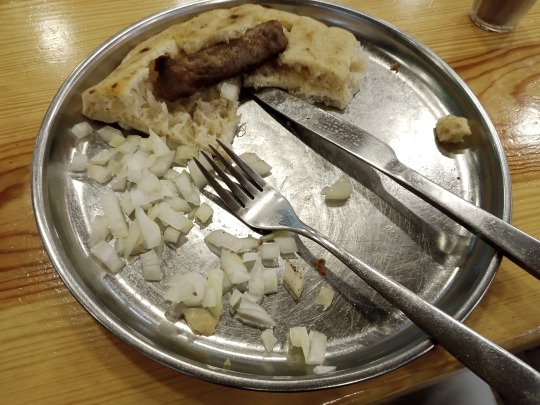
During this trip, I also went hiking on Trebevic Mountain with two friends. The views from up there were pretty amazing and the hike itself was a good way to spend the day.
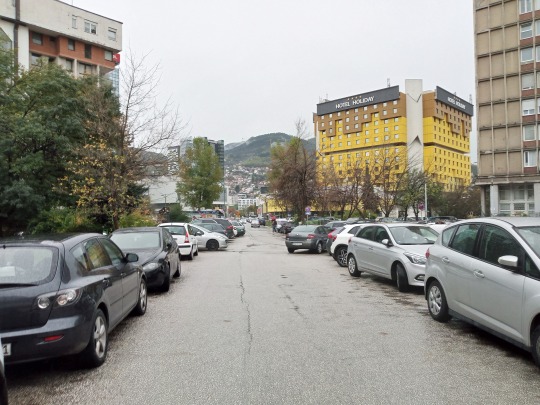
Walking around Sarajevo, you can see the mix of Ottoman and Austro-Hungarian influences in the architecture. The bazaars and old streets give the place a lot of character. Despite its history, the city feels lively and resilient.
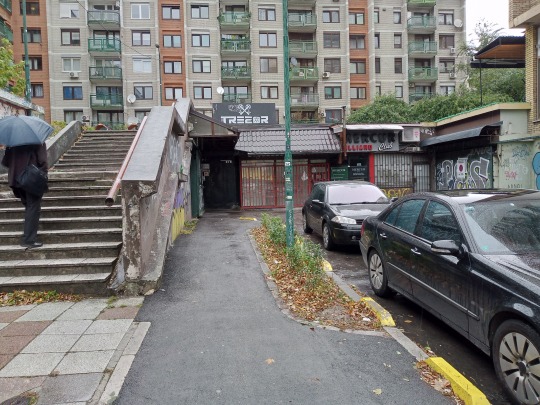
In the evening, we found a local café to relax, sipping Bosnian coffee and chatting about the day. Sarajevo's a city that I always enjoy coming back to – it's got this welcoming atmosphere and enough history to make every visit interesting.
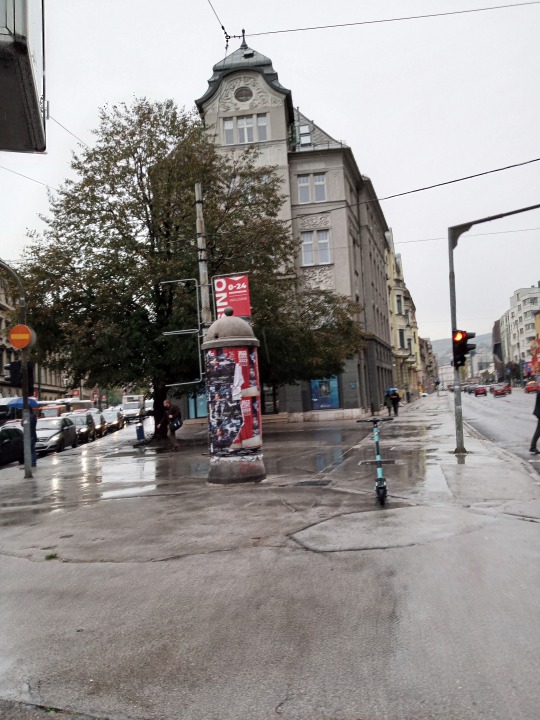
3 notes
·
View notes
Text
Bosnia's international peace overseer, Christian Schmidt, on Saturday annulled two laws that Bosnian Serb parliament had adopted defying the constitution and the terms of a peace deal that ended the Balkan country's war in the 1990s.
"Recent decisions by the National Assembly of Republika Srpska directly violate the constitutional order of Bosnia-Herzegovina and the Dayton peace agreement," Schmidt told a news conference in Sarajevo.
Schmidt was referring to lawmakers in Bosnia's autonomous Serb Republic voting to suspend rulings by Bosnia's constitutional court and stopping publishing the peace envoy's decrees and laws in the official gazette.
The Dayton peace accords ended nearly four years of war, in which about 100,000 died, by splitting Bosnia into two autonomous regions, the Serb-dominated Serb Republic and the Federation shared by Bosniaks and Croats, linked by a weak central government.
The region's separatist pro-Russian President Milorad Dodik, who has long criticised the court for having foreign judges on board, initiated the vote after the court last week decided to change the rules to be able to convene sessions and make decisions without Serb judges.
The Serbs say they do not recognise Schmidt, who was appointed in 2021, as the high representative because the U.N. Security Council did not endorse his appointment.
"Republika Srpska will not accept a single decision of the fake high representative," Dodik, who was sanctioned by the United States and the United Kingdom for corruption and obstructing the peace, said on Saturday.
Schmidt said that his decisions are effective immediately.
The U.S. embassy welcomed Schmidt's decisions, agreeing that he was defending the Dayton peace deal and the constitution upholding the rule of law in Bosnia.
1 Jul 23
6 notes
·
View notes
Note
Hey!! ❄️❄️❄️ If possible can I take part in the game too!?? If it's still open.
-what will my fs like the most about me?
My initials-JK, Zodiac-Cap ☀️
Just know that receiving the answer from or not I'm greatful to even just participate in the reading! Sending good energy>33 🌙✨
gift no. 23
hey,
wheel of fortune: they will truly appreciate the faith you have in the universe. you are someone that leads with abundance and doesn't let pain put you down. you are open to new thoughts, ideas, situations, and people. you are a welcoming spirit and not someone who clings to what they know.
6 of cups rx: you aren't unhealthy attached to the past - you are someone who looks forward. you appreciate fond memories, without being overly attached to sentimentality. you don't wish for old ways, but embrace new possibilities instead.
5 of swords: you self reflect in the most healthy way possible. when you experience big emotions you take a moment to reflect on why you reacted the way you did. you are aware of your personal power. you aren't afraid of standing up for yourself and addressing when something bothers you.
shufflemancy: "christmas eve / sarajevo 12/24 - instrumental" by trans-siberian orchestra
-a.d.
#tarotdaily#tarot witch#tarot art#free tarot#daily tarot#rider waite tarot#tarot deck#tarot reading#tarot cards#tarot#tarotblr#tarotcommunity
5 notes
·
View notes
Text
sometimes i think about the fact that michael winterbottom, serious dramatic film maker, who directed "welcome to sarajevo" and "24 hour party people", took one look at rob brydon and steve coogan's slightly toxic/erotic co-dependant banter, and said "there's five movies worth of shit to unpack here" and he was right
10 notes
·
View notes
Text
Some pics from Sarajevo! It’s a gorgeous city with an incredibly sad story and I feel so honored to have visited it (Bosnian people are also the most welcoming I’ve ever met!).
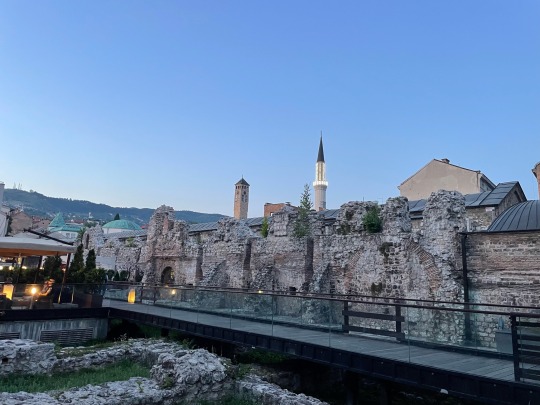


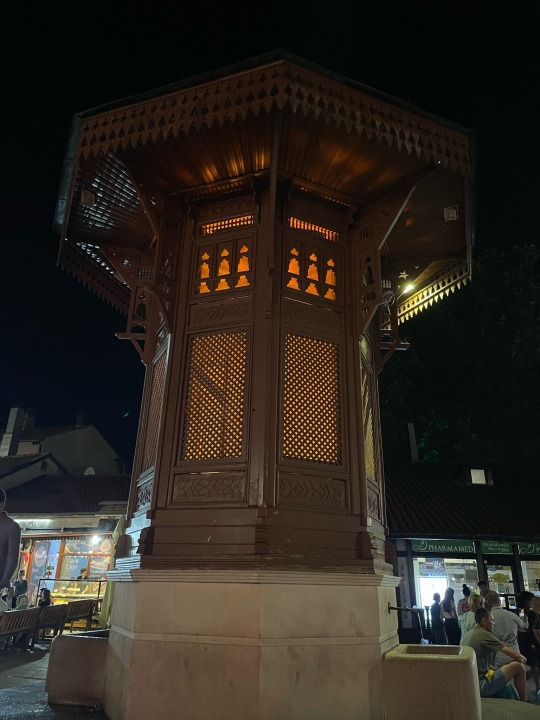
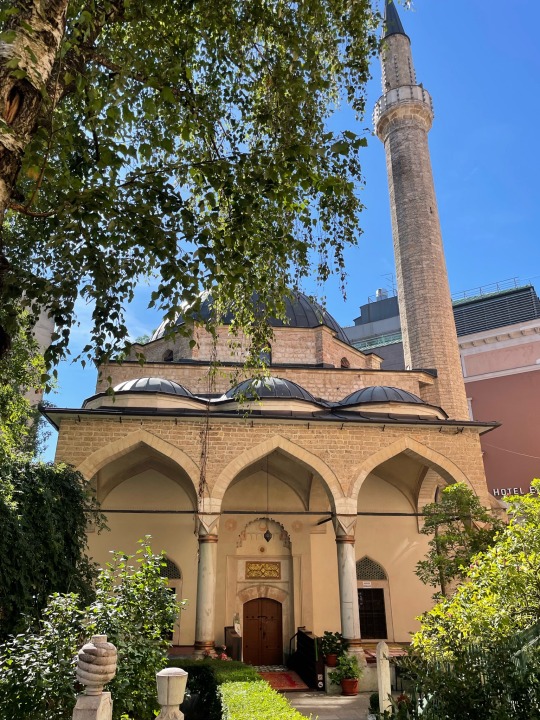
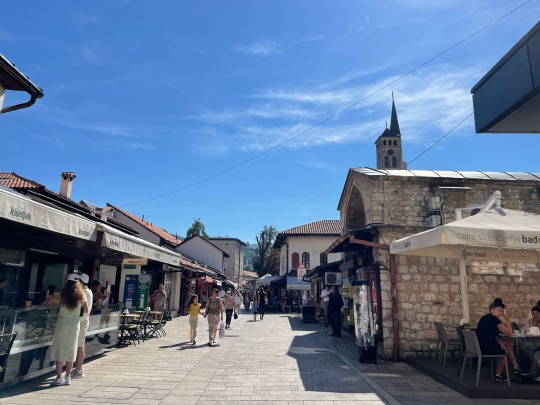

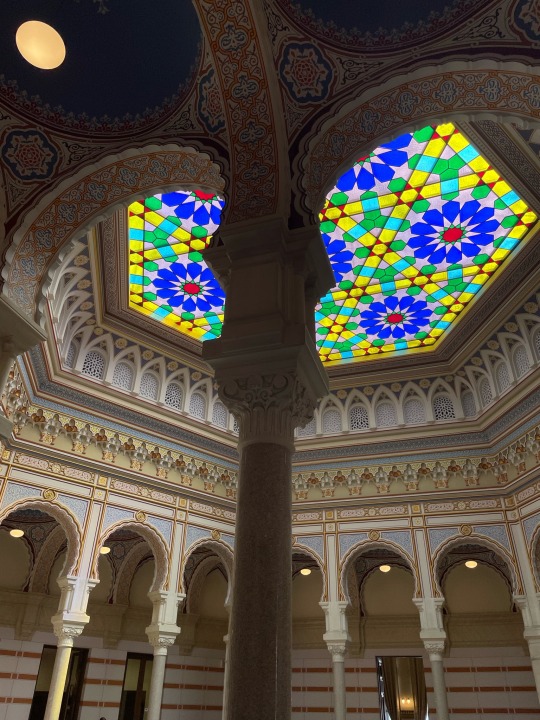
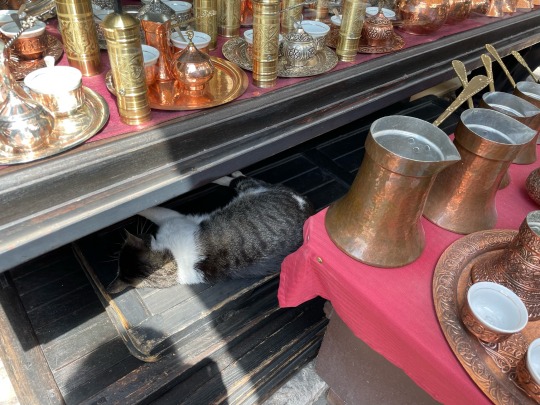

5 notes
·
View notes
Text
In 1995, a U.S.-led military intervention ended three and a half years of war in Bosnia. Along with the European Union, the United States invested heavily in peace-building. Now, pro-Russian actors threaten to derail the country’s future with Western institutions by preventing its accession to NATO. Earlier this month, Russia’s ambassador to Bosnia made a veiled threat to the country in case it decided to proceed with NATO membership. The window of opportunity for the United States and NATO to act, and welcome Bosnia to the alliance, is still open—but it may be starting to close. Amid the war in Ukraine, it is time to seize the momentum and expand NATO to include Bosnia.
It was a NATO-led mission that successfully implemented the military aspects of the Dayton Accords, ending the carnage of war, from late 1995 to 2004. The 60,000-strong force was a major reason the country did not slide back into conflict. In fact, NATO is generally credited with ensuring much-needed security in postwar Bosnia.
For decades now, joining the EU and NATO have been Bosnia’s top strategic objectives, though NATO is incomparably more important. The country’s recent history, marked by internal secession and external interference from neighboring Serbia and Croatia in the 1990s, is a constant reminder of the necessity of acquiring a security umbrella.
Bosnia’s decision on NATO membership was clearly laid out in 2005 when the Law on Defense was adopted. Article 84 of this law states that all state-level institutions including the presidency, the state-level government, and the state-level parliament will work toward achieving full membership in NATO.
By undermining Bosnia’s functioning, though, anti-NATO forces are working to ensure that the country remains fragile and fails to meet requirements for full membership in the alliance. They are aided in this mission of sabotage by the country’s political system—one of the most complex in the world, for a population of less than 3 million.
Bosnia has multiple levels of governance: the state level, entities, cantons, and municipalities. As a result of the complex power-sharing agreement, there are a series of built-in institutional vetoes that hamper efficient decision-making. For a country with a rapidly declining population, Bosnia has an extraordinary number of politicians: three co-presidents, 14 parliaments, more than 130 ministers, and at least 70 political parties.
This Byzantine system means that it takes months to form governments at different levels across the country. Around 10 major political parties in the country are both in power and in opposition simultaneously at different levels of governance. This, along with ethnic-based politics and vetoes, effectively impedes change.
Bosnia has faced institutional gridlock, secessionism, rampant corruption, and external meddling in what has turned out to be a decade and a half of prolonged instability. Thousands of Bosnians are voting with their feet in search of a brighter future elsewhere in Europe. Towns and villages across the country are eerily deserted as the outward migration takes a staggering toll.
In the lead-up to elections last October, a number of political parties branded themselves as reformist, promising major changes in a country where ethnic affiliations dominate. When the new state-level government was finally formed in late January, international diplomats based in Sarajevo welcomed this as a sign of much-needed change. The U.S. Embassy voiced its support and offered to assist in “reforms required for BiH’s Euro-Atlantic integration,” and the EU expressed its enthusiasm.
In fact, both change and the country’s pro-Western course are now in doubt.
At the state level, two hard-line parties that have dominated the country’s politics remain in power: the Bosnian Serb Alliance of Independent Social Democrats (SNSD) and the Croat Democratic Union (HDZ). A coalition document signed before the new government took office ominously left out Bosnia’s objective of joining NATO. There is a reference to the country’s ambition to join the EU, but not the military alliance.
In the highly autonomous Republika Srpska, which makes up 49 percent of the country’s territory, an anti-NATO constituency has emerged. When NATO had boots on the ground, until 2004, there was little open anti-Western sentiment. The Americans’ turn away from the Balkans—and the departure of U.S. troops in the wake of the wars in Afghanistan and Iraq—left a power vacuum in the country. A new EU-led force in Bosnia turned out to be no more than a paper tiger.
While the EU’s approach to Bosnia was hapless, Russia’s assertiveness across Europe over the past decade has been felt, especially in Bosnia. Back in 2009, Bosnia’s Serb member of the presidency, Nebojsa Radmanovic, was in favor of Bosnia’s aspiration to join NATO. Now, the leader of SNSD, Milorad Dodik, is at the forefront of anti-NATO sentiment. Once a nominal social democrat praised by former U.S. Secretary of State Madeleine Albright, Dodik has been in power since 2006 and has firmly entrenched himself as the dominant figure in Republika Srpska. For the past 17 years, he has worked assiduously to undermine Bosnia’s state-level institutions. In response, the United States imposed sanctions on Dodik in 2017, but to little effect. Targeted sanctions by the United Kingdom last year were similarly ineffective.
Dodik has for years cultivated close links with Moscow. He supported Russia’s invasion of Ukraine and visited President Vladimir Putin twice last year. Dodik has positioned himself as the Russian president’s most loyal ally in this part of Europe. In early January, the Bosnian Serb leader awarded Republika Srpska’s highest medal of honor to Putin. This was a direct poke in the eye to the West.
As he provokes the West with no consequences, his and his allies’ pro-Russian sentiments are on full display. After NATO defence ministers pledged to step up their support for Bosnia, Georgia and Moldova in mid-February, Dodik came out against this assistance. As Ukraine prepares to mark the first anniversary of the Russian invasion, Republika Srpska parliament speaker and Dodik ally Nenad Stevandic is on an official visit to Moscow this week.
Apart from Dodik, another influential actor in the new government is the leader of the HDZ, Dragan Covic. Both Dodik and Covic are veterans of Bosnia’s political scene and have a rock-solid alliance. Unlike Dodik, Covic is not on the record as being opposed to NATO. But he has been airing pro-Russian views over the last few years.
Back in 2017, Bosnian-American scholar Jasmin Mujanovic was the first to point out Covic’s and HDZ’s pro-Russian sentiments. In 2020, Covic declared that there “there is very little Russian influence here.” Following the Russian invasion of Ukraine, Covic and a few fellow HDZ members voted against Bosnia joining EU sanctions on Russia.
With two influential political parties in the new ruling coalition at the state level harboring pro-Russian views, alarm bells are ringing for Bosniak Muslims. According to the last census conducted in 2013, Bosniaks comprised 50.1 percent of the population. While ethnic Serbs and Croats have their kin states in neighboring Serbia and Croatia, this is not the case with Bosniaks. They have no alternative homeland or fallback option. For Bosniaks, building up the country’s institutions and joining NATO are crucial to guaranteeing their safety.
There are broader consequences to pro-Russian actors fostering instability in this corner of Europe. A destabilization of Bosnia could easily spill over into next-door NATO member states Croatia and Montenegro. Bosnia’s 12-mile shoreline is the only non-NATO territory on the Adriatic Sea. With pro-Russian politicians also influential in Montenegro, Russia is set to gain access to the warm waters. This means two countries that were once both pro-Western have become contested between the West and Russia. A worst-case scenario mulled by some analysts is the opening of a new front in the Balkans to distract from the war in Ukraine.
Sarajevo is an hour’s flight from Vienna, and in the early 1990s, hundreds of thousands of Bosnian refugees made their way to Western Europe. Investing in Bosnia’s security is a direct investment in Europe’s security.
If Bosnia’s NATO integration is stalled—as is expected—the message for the United States and its allies in NATO is clear: Admit Bosnia into NATO before it is too late.
The good news is that despite Bosnia’s changing electoral politics, polls show NATO is still broadly popular. A survey conducted by the International Republican Institute last year found that 69 percent of Bosniaks and 77 percent of Croats support NATO membership.
In the wake of the war in Ukraine, NATO Secretary-General Jens Stoltenberg support for Bosnia and has stated that the country is on a path to membership. The alliance is implementing the Membership Action Plan for Bosnia, which is a stepping stone to accession to NATO. But time is of the essence. A narrow focus on Bosnia meeting requirements for NATO membership should give way to the larger objective of securing this corner of Europe.
NATO’s history includes several cases of strategic enlargement. In 1952, Greece became a member following the Greek Civil War. West Germany was admitted in 1955 while under U.S. tutelage. Spain joined NATO in 1982, several years after the Franco dictatorship ended. In these cases, democratic development took a back seat to strategic imperatives. The same should be the case today for Bosnia. Unless Bosnia is admitted quickly, a Russian outpost in what should have been NATO territory could be the new reality.
His response, based on the linked source, seems more neutral. He said NATO would respect Bosnia’s choice to join or not.
5 notes
·
View notes
Text
When you don’t know where you are going navigating easy
15th June: We ride across the north-east corner of Croatia from Maribor to Osijek crossing the border at Varazdin. Then, on what on the map was marked as a major road, it was 160 miles of village after village and roadworks after roadworks. All the villages are one road wide, no turnings off with older single storey houses perpendicular to the main road with fields of wheat, barley or sunflowers behind.
In Virovitica, close to the dayglo pink Pejacevic Castle, we stop at Denis Fast Food Joint and grab the remaining vacant seats at an already occupied table. Three mid-teens scowl at us, tough on them. The one I sit next to scowl is enhanced by fat botoxed lips and half-a-dozen stars tattooed on her face.
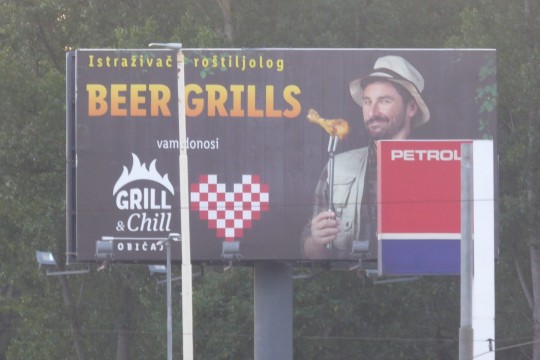
I lead us into Osijek and stop outside the three-star Rooms Rebolz Hotel. A deal is struck for cash before we have even seen the rooms and, of course, they are completely fine. So far Croatia doesn’t do card payments so we have to spend our euros and extract as little as possible from the ATMs.

We walk into the city at night hoping to find somewhere to eat and end up in the courtyard at Corrolla for quattro formaggio gnocci. I lose then find my MasterCard but lose the 200kuna I took from the ATM in Virovitica earlier in the day. The waiter can’t believe that we want to walk into town; he reckons it is at least an hour away. Ten minutes later we are there. The main square is very quiet with an enormous brick cathedral, theatre arcade and some funky statues.

Croatia has been an uninspiring ride of long flat roads. At Brcko we cross the border into Bosnia and after a minor delay with the inevitable police checks – no bribes required – we are soon on our way again.

At Janza we stop for a break and try to figure out the local currency before using the ATM. While Phil consults his phone I pop into the bank to ask the cashier. I am accosted by a child with excellent English, self taught from watching American movies on Netflix. He appoints himself our tour guide cum minder for the afternoon, advising on good restaurants and posing for selfies with our bikes. I reward him with some rupees left over from a previous trip, which he promptly changes at the bank and is later seen with two massive ice-creams for himself and his non English speaking friend. (Travellers Top Tip: hang on to your low denomination left over currencies. They are always useful for paying off bribes, gifts or tips).

When you don’t know where you are going navigating easy, you just head to wherever you want. Rolling into the centre of Sarajevo we arrive at the Europa Bar, formerly the athletes’ HQ of the 1984 Olympic Complex. Looking for just a little bit of peace and quiet after helmet noise all day no sooner have we ordered cold drinks, teas and coffee than the barman cranks up the volume and we are deafened by techno hardcore turned all the way up to 11. Now we realise that we are the oldest customers by a good forty years. Two tables away pneumatic lips and boobs are in competition as to what can be puffed out the most.

Soon we are checking in to the Hotel Grand,[1] so grand, in fact, that packs of stray dogs roam the carpark and provide the welcome reception. Single rooms, double bed, jacuzzi bath, mezzanine bar (closed), shiny Swiss bikers and shiny Swiss bikes.
Phil and Owen want to head back into town for “just one” but I will not be persuaded. On this trip experience shows that just one invariably becomes at least just on round, each, for starters.
[1] Muhameda ef. Pandze 7, 71000 Sarajevo. T: +387 33 563100 E: [email protected]
2 notes
·
View notes
Text
Third LINA Open Call
Invites emerging creatives to apply with ideas, texts and practices addressing the environmental crisis. The Open Call seeks emerging spatial practitioners, thinkers, and creatives to become LINA fellows. Individuals and teams are invited to apply with radical ideas, practical solutions, theoretical insights or thought-provoking practices addressing the environmental crisis.

25 selected authors will be invited to the 2024 LINA Conference in Sarajevo (3–4 October), while any one of the eligible applicants can be invited to co-create the LINA Architecture Programme, a series of events organised by members of the platform across Europe.
About LINA
LINA is a European platform: a network of 34 institutions working at the intersection of architecture and other fields related to spatial culture. It works to promote emerging thinkers and practitioners with the goal of steering design and building processes towards regenerative practices and principles of de-growth.
A growing alliance of museums, universities, research networks, foundations, triennials, biennials, and other European and Mediterranean organisations—LINA members—carries out a series of events taking place all over Europe. The programme is co-funded by Creative Europe.

Who we are looking for
We are looking for innovative individuals and collectives who apply their theoretical and practical knowledge to better our common future. We’re searching for innovators who develop spatial practices that question the status quo. We want to welcome new and emerging voices to make their mark and help amplify their radical ideas.
We are looking to give a platform to those who have not yet broken through to the international audience, and are not yet established in their respective fields. Age is not a limit, however only Creative Europe country residents are eligible to participate.
We are looking for those wanting to participate in mentoring, teaching, residencies, research, writing, who want to present their work and develop meaningful programmes. Though travel is not always a necessity, we are looking for those interested in international collaboration. We want to promote people who care for the future of our planet and who share our ethical values.
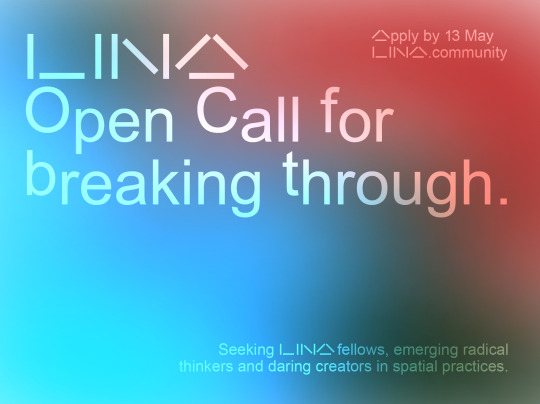
Financial framework
There is no participation fee for the Open Call. One representative of each 25 selected LINA fellows (which can be teams or individuals) will be provided accommodation and reimbursed for their travel (up to 350 EUR) to attend the LINA Conference in Copenhagen on 9–10 October.
After that, work within the LINA Architecture Programme is regulated through contracts LINA fellows sign with LINA members. Both will be supported by the LINA team throughout the process. Contracts cover honorariums and expenses and define the amount of work undertaken by LINA fellows.
We’re looking forward to welcoming a new generation of LINA fellows!
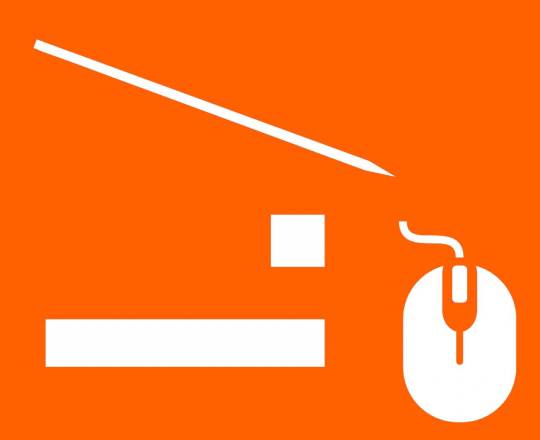
Within the Digital Research Fellowship Architectuul will select fellows to join the collaborative online architecture publication and work with its editorial team. During the fellowship Architectuul’s editorial team will familiarise the Fellow with the tools and methods of digital publishing, together we will create a digital content about the project collaboration.
1 note
·
View note
Text



Artist Of The Year: George Watsky!
This is gonna be on the longer side, so I'm cool if you don't to read of it. TLDR: Watsky put in the creative work and he's supper nice!
Honestly I didn't know who I wanted to give artist of the year to and although he's been a constant shout out for me over the years, I kept coming back to the thought that Watsky's put in so much creative work this year. He was dedicated to the art, put on a FANTASTIC show and was still trying to give back to his community of fans, even me personally. So, at the end of the day there wasn't really a question cause I already had the answer.
First he put out Intention the final album in a trilogy of albums, did an US/International tour, with a FREE live stream of one of the dates, for that album. Then at the end of all that decided that he'd go back on a mini tour at the end of the year to do a Art Pop Up/Meet & Greet as a send off and a thank you to the fans.
Now I'm not gonna get into the lore of all the challenges and puzzles and international scavenger hunting, he's done this last year as well, and probably even longer, just know that ish is amazing and shout out to anyone who was apart of that being the hella cool thing that it was/is. I just watched him in a not so parasocial way live stream his life for a couple weeks (was it a couple weeks?) while he hand drew all of the art work for the lyrics of his last album to be put into a book. It was a comfort watch this summer. So yeah, when I talk about the work, this is what I mean.
Artist of the year is really better known as artist of MY year, and although he would still deserve it otherwise and knowing that I wasn't the most knee deep into everything, I was still there for so much and had a lot of fun. The tip-over however was when he decided to make small batch of physical copies of the live album he made for the Metro date and I happened to win a copy. The first one got lost in the mail somewhere (or so I'm assuming) and upon sending a follow up email, hoping I didn't look "desperate" he was basically like "you didn't get yours? I'll send you another one."
That story shorter, the special thing about all of this is that he was like you got my word that I'll get you another one. Although I would have been bummed, I would have eventually just been okay with winning at all, but he did the extra and in the world of fan experiences, that was cool of him. It really made me feel like this was something I was supposed to win, like he thought I deserved it. Now ish might not be that deep lol, but to me it felt like it was.
All I'm really saying is that between getting to see a really good "final" show live (from my couch too), watching him livestream his creative process, as well as getting what I consider to be special fan experiences without having to pay for VIP, means a bit to me and so deserving, he is. __________________________________________________________________
Mini Watsky Introduction Playlist
Note: This does not include the lore and unfortunately stuff from the mix-CD's. I worked only with what's available on Spotify.
Two Blue Moons - Watsky (Self Titled)
(*Bonus Track) Dent In The Moon - Cardboard Castles
Sarajevo ft. Dia Frampton - All You Can Do
Wounded Healer (Live) - All You Can Do: Live From The Regency
(*Bonus Track) Exquisite Corpse ft. Dumbfoundead, Grieves, Adam Vida, Wax, Rafael Casal, Daveed Diggs, and Chinaka Hodge - x Infinity
Same Way - Fine Print (Invisible Inc.)
Welcome To The Family - COMPLAINT
Undermine ft. Raquel Rodriguez - PLACEMENT
FLOAT - INTENTION
Tiny Glowing Screens Pt 2. (Live) - Watsky Live from the Metro
Spotify Link!
.
.
PS: When I get to it and have the emotional capacity for that amount of sentimental-ness, I'll do an official reminiscing of the last 10/11, maybe even more years of my time going to Watsky shows. I'm also still gonna make the official Intention tour post, as well as one for the Art Pop-Up, so there will for sure be more Watsky content to come.
#Class Favorites 2023#AKWARD CLASS FAVORITES#Artist Of The Year#Watsky#George Watsky#Akward Mixes#Playlists
0 notes
Text
HEY
ARE YOU A FAN OF TRANS SIBERIAN ORCHESTRA’S CAROL OF THE BELLS LIKE I AM
THEN MAYBE YOU’VE ALSO BEEN ANNOYED AT THE FACT THAT IT DOESN’T SEEM TO BE ON SPOTIFY
WELL I’M HERE TO TELL YOU
THAT YESTERDAY I FOUND OUT THAT IT IS ON SPOTIFY
IT’S JUST NOT CALLED CAROL OF THE BELLS!!!
YOU’RE WELCOME!
0 notes